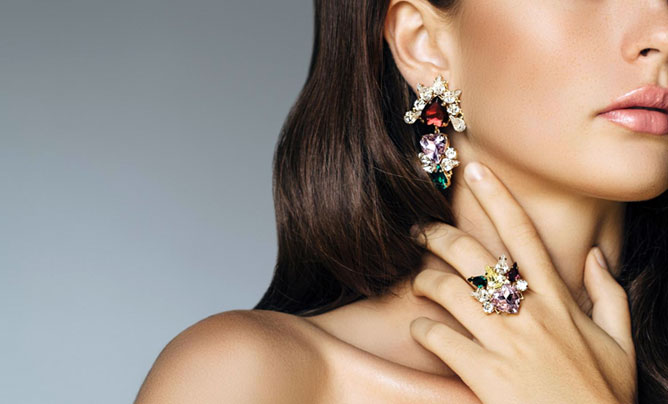Choosing the perfect engagement ring is a monumental task that signifies love, commitment, and the start of a new journey together. With an overwhelming array of options available, it’s essential to be well-informed to make the right choice. This comprehensive guide will walk you through everything you need to know to choose the perfect engagement ring.
Introduction
The engagement ring has long been a symbol of love and commitment. Its history dates back to ancient Rome, where the tradition of giving a ring as a pledge of love began. Today, engagement rings are a deeply personal token, often representing both the couple’s shared past and their hopes for the future.
Understanding the 4Cs
When choosing an engagement ring, understanding the 4Cs—Cut, Clarity, Carat, and colour—is crucial. These factors determine the quality and value of the diamond.
Cut
The cut of a diamond refers to how well it has been shaped and faceted. It affects the diamond’s brilliance and sparkle.
- Excellent Cut: Reflects nearly all light that enters the diamond, creating exceptional sparkle.
- Very Good Cut: Reflects most of the light, providing a high level of brilliance.
- Good Cut: Reflects a significant amount of light but less than very good cuts.
- Fair Cut: Reflects some light, but not as much as higher-grade cuts.
- Poor Cut: Reflects very little light, resulting in a lacklustre appearance.
Clarity
Clarity measures the presence of internal flaws (inclusions) and surface defects (blemishes).
- Flawless (FL): No inclusions or blemishes visible under 10x magnification.
- Internally Flawless (IF): No inclusions visible under 10x magnification.
- Very, Very Slightly Included (VVS1 and VVS2): Inclusions are difficult to see under 10x magnification.
- Very Slightly Included (VS1 and VS2): Inclusions are somewhat easy to see under 10x magnification.
- Slightly Included (SI1 and SI2): Inclusions are noticeable under 10x magnification.
- Included (I1, I2, and I3): Inclusions are obvious under 10x magnification and may affect transparency and brilliance.
Carat
Carat refers to the weight of the diamond. One carat is equal to 200 milligrams. Larger diamonds are rarer and more valuable, but two diamonds of equal carat weight can have different values based on their cut, clarity, and colour.
colour
colour grading assesses the absence of colour in a diamond. The GIA colour scale ranges from D (colourless) to Z (light yellow or brown).
- D-F: colourless
- G-J: Near colourless
- K-M: Faint yellow
- N-R: Very light yellow
- S-Z: Light yellow
Choosing the Right Metal
The metal of the engagement ring band is just as important as the diamond. Popular options include gold, platinum, and palladium, each with its own characteristics.
Gold
Gold comes in various colours, including yellow, white, and rose.
- Yellow Gold: Classic and timeless, suitable for vintage styles.
- White Gold: Modern and sophisticated, often coated with rhodium for extra shine.
- Rose Gold: Romantic and unique, gaining popularity for its warm hue.
Platinum
Platinum is a durable and hypoallergenic metal, making it ideal for everyday wear. It has a natural white lustre and does not require rhodium plating.
Palladium
Palladium is similar to platinum but lighter and less expensive. It’s durable and maintains its white colour without the need for plating.
Ring Settings and Styles
The setting of the ring influences its overall look and how the diamond is showcased. Popular settings include:
Solitaire
A single diamond set on a simple band. It’s classic and timeless, allowing the diamond to be the focal point.
Halo
A central diamond is surrounded by a circle of smaller diamonds, enhancing the ring’s sparkle and appearance of size.
Pavé
Small diamonds are set closely together along the band, creating a continuous sparkle effect.
Three-Stone
Features three diamonds, typically representing the past, present, and future of the relationship.
Vintage
Inspired by designs from past eras, often featuring intricate details and filigree work.
Custom vs. Ready-made Rings
When choosing an engagement ring, you can opt for a ready-made ring or a custom-designed piece.
Ready-made Rings
These are pre-designed and readily available from jewellers. They are convenient and often more affordable than custom designs. However, customisation options are limited.
Custom-designed Rings
Custom rings are designed specifically to your specifications. This allows for a unique and personalised piece but can be more time-consuming and expensive.
Budgeting for the Ring
Setting a budget is crucial when choosing an engagement ring. Here are some tips to help you stay within your financial limits:
Determine Your Budget
Consider your financial situation and decide on a budget you’re comfortable with. Remember that the traditional rule of spending two to three months’ salary is just a guideline.
Prioritise the 4Cs
Decide which of the 4Cs is most important to you. For example, if you prioritise carat weight, you might need to compromise on clarity or colour to stay within budget.
Explore Financing Options
Many jewellers offer financing plans that allow you to pay for the ring over time. Be sure to understand the terms and interest rates before committing.
Conclusion
Choosing the perfect engagement ring involves a balance of personal taste, education, and financial planning. By understanding the 4Cs, selecting the right metal, choosing an appropriate setting, and considering custom options, you can find a ring that symbolises your unique love story. Remember, the perfect ring is one that resonates with both you and your partner, reflecting your shared journey and future together.










